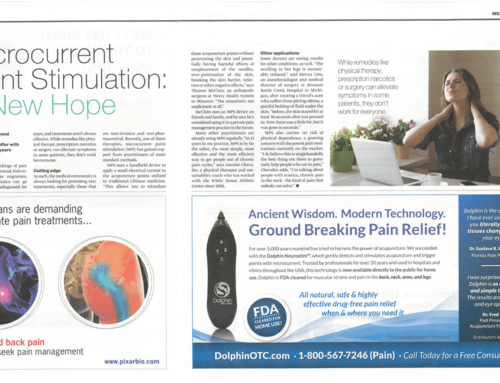Fibromyalgia is characterized by widespread musculoskeletal pain and tenderness. It involves a group of non-articular disorders, which includes: Myofascial Pain Syndrome, Fibrositis, and Fibromyositis. Patients complain of heightened sensitivity to pain and tenderness that is difficult to localize. Fibromyalgia pain involves muscles, fibrous tissues and associated structures. It comprises a wide range and can cause moderate to severe pain all over the body, reducing a patient’s functional capacity.
The condition is more common in women than in men. In the past, the American College of Rheumatology required a minimum of 11 painful sites or tender points to confirm the diagnosis of fibromyalgia. In current practice the requirement of tender points was eliminated as a criterion for diagnosis because the pain threshold of patients is highly variable. The new guideline focuses on clinical symptoms of widespread pain and neuropsychological symptoms. The disease is classified as a neuropathy or nerve dysfunction. The exact cause of fibromyalgia is unknown, but there are postulated theories like the existence of peripheral pain generators that serve as triggers to the central nervous system.
Laboratory tests reveal an altered sensory afferent pain processing and impaired descending inhibitory control leading to different types of pain. There are three types of fibromyalgia pain and this is based on the patient’s perception. The three types of fibroymalgia pain are clinically defined as paresthesia, allodynia, and hyperalgesia.
- Hyperalgesia is the heightened and exaggerated response to a normally painful stimulus. The sensation of pain is amplified as it travels to the central nervous system. A small pinprick will feel like a sharp stabbing pain to a patient with fibromyalgia.
- Allodynia is defined as perception of pain to a non-painful stimulus like touch. A simple pat on the back or a handshake could be painful. A moderate sound volume will be perceived as loud, painful and piercing.
- Paresthesia in fibromyalgia is defined as an odd and painful nerve sensation. Patients could feel a tingling, numbness, or burning sensation. Crawling and a “pins and needles” feeling also come under paresthesia.
References:
http://www.merckmanuals.com/home/bone_joint_and_muscle_disorders/muscle_bursa_and_tendon_disorders/fibromyalgia.html
http://www.fibrocenter.com/fibromyalgia-pain.aspx
http://fmcfsme.com/fm-paintypes.php
http://www.jrheum.com/subscribers/06/04/827-c.html







Leave A Comment